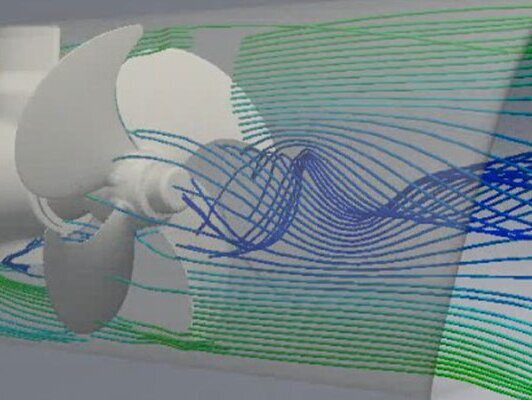Due to their large size and weight, their relatively low power and the potential for large environmental forces, the manoeuvring of a ship in hazardous and busy channels can lead to collisions, groundings or close ship passing incidents.
Brookes Bell is on hand to provide you with the best scenario analysis services for forensic investigations or the assessment and mitigation of risk.
Brookes Bell manoeuvring simulation (BBSIM)
BBSIM has been developed with the guiding principle that the mathematics used should represent the most accepted and rigorously applied methods in the open literature in peer-reviewed publications.
The models generated by BBSIM are regarded as state of the art by researchers working in the field. This means our experts can stand by our models in hearings when simulations are contested.
Multiple models
BBSIM has several manoeuvring models, the use of which depends on the scenario:
- The Japanese MMG 3-Degrees of Freedom (surge, sway and yaw) Model for typical ships travelling at speed
- The 4 Degree of Freedom Model (surge, sway, yaw and roll) for ships with low stability
- The Cross Flow Model for ships in harbour
- Computational fluid dynamics models for unusual ship shapes, confined waters and/or passing ships.
It’s because Brookes Bell is able to make use of a range of models that we are so highly regarded in the field of manoeuvring simulations.
System identification
Empirical models in the open literature allow the generation of a base model which can deviate from the known manoeuvring performance as quantified on the wheelhouse poster or GPS data of a ship’s movements before an incident.
To improve our models, we deploy a system identification method for improving the model to match the actual behaviour of the ship in a rigorous and scientific manner.
This is a unique capability of BBSIM.
Mooring, anchoring and towing loads
BBSIM is able to apply mooring, anchoring and towing loads when first-order wave effects are not important (e.g. when the sea is calm).
This can be used for ship passing cases (alongside CFD analysis), cases involving the mooring/anchoring of loads in high winds or cases involving the interaction between a tug and its tow.
Animations
At Brookes Bell we can provide you with 3D animations of an incident, viewed from outside or from specific positions on board (e.g. bridge).
These animations can assist legal teams or arbitrators better understand what information was available to a crew as an incident unfolded.
Brookes Bell: your first choice for manoeuvring simulation services
Our manoeuvring simulations may be industry leading, but that’s not all that we’re known for here at Brookes Bell.
We offer a broader package of services that cover a broad range of incidents. We are able to take an incident from initial plotting of GPS data, an initial assessment from a Master Mariner, the simulation of an incident and counter-factual alternatives, to creation of realistic 3D animations.
For more information on how Brookes Bell’s manoeuvring simulation services can help you and your business, contact us today for a free consultation.

